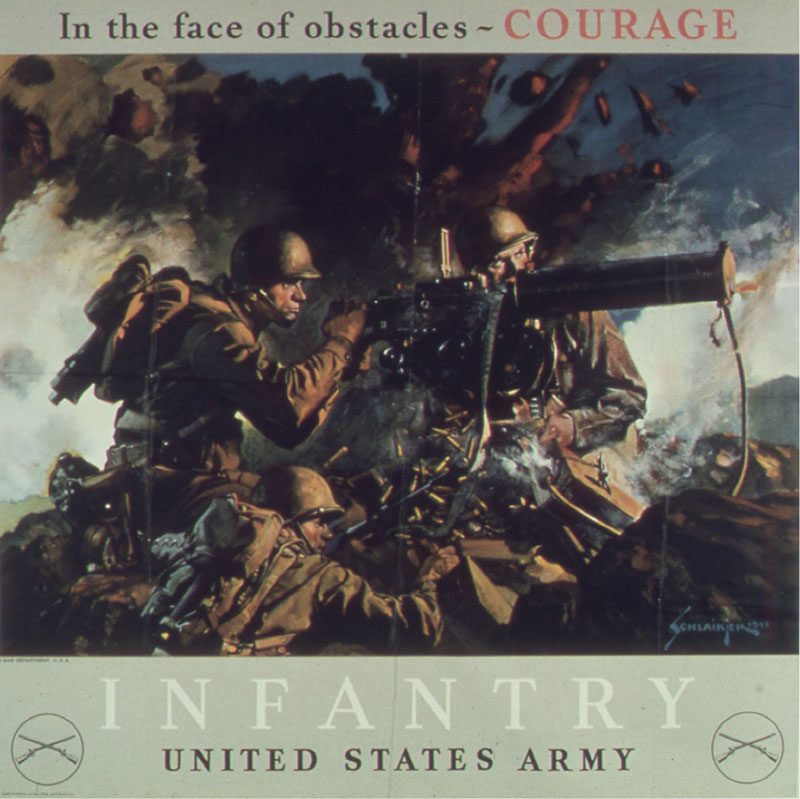Module 11: Fighting the Good Fight in World War II, 1941-1945
Section outline
-
 Image from Chapter 27 of U.S. History (opens in new window) from OpenStax, licensed under Creative Commons Attribution License v4.0 with the image information: During World War II, America propaganda was used to drum up patriotism and support for the war effort. This poster shows the grit and determination of infantrymen in the face of enemy fire.
Image from Chapter 27 of U.S. History (opens in new window) from OpenStax, licensed under Creative Commons Attribution License v4.0 with the image information: During World War II, America propaganda was used to drum up patriotism and support for the war effort. This poster shows the grit and determination of infantrymen in the face of enemy fire.
In this module, you will explore America during Word War II. After World War I, America sought to create new international relationships that would make such wars impossible in the future. But, as the Great Depression hit Europe, several new leaders rose to power under the new political ideologies of Fascism and Nazism. The brunt of the war’s damage occurred far from United States soil, but Women struggled to care for children with scarce resources at their disposal and sometimes while working full time. Strict rationing for the war effort meant that Americans still went without. Appeasement and nonintervention had been proven to be shortsighted and tragic. With the aid of the British, the United States invaded North Africa and from there invaded Europe by way of Italy but the cross-channel invasion through France did not come until 1944. The way in which the United States fought the war in the Pacific was fueled by fear of Japanese imperialistic aggression, as well as anger over Japan’s attack on Pearl Harbor and its mistreatment of its enemies.Upon completion of this module, you will be able to:- Explain the factors in Europe that gave rise to Fascism and Nazism (CO 1-5)
- Discuss the events in Europe and Asia that led to the start of the war (CO 1-5)
- Identify the early steps taken by President Franklin D. Roosevelt to increase American aid to nations fighting totalitarianism while maintaining neutrality (CO 1-5)
- Describe the steps taken by the United States to prepare for war (CO 1-5)
- Describe how the war changed employment patterns in the United States (CO 1-5)
- Discuss the contributions of civilians on the home front, especially women, to the war effort (CO 1-7)
- Analyze how the war affected race relations in the United States (CO 1-7)
- Identify the major battles of the European theater (CO 1-5)
- Analyze the goals and results of the major wartime summit meetings (CO 1-5)
- Discuss the strategy employed against the Japanese and some of the significant battles of the Pacific campaign (CO 1-5)
- Describe the effects of the atomic bombs on Hiroshima and Nagasaki (CO 1-5)
- Analyze the decision to drop atomic bombs on Japan (CO 1-7)
To achieve these objectives:
- Read the Module 11 Introduction above.
- Read and view the materials in Module 11 (click below)
- View the Module 11 PowerPoint below.
- Complete Module 11 quizzes/assignments/discussion boards based on chapter/document reading.
Module Pressbooks Resources and Activities
You will find the following resources and activities in this module at the Pressbooks website. Click on the links below to access or complete each item.
Background Colour
Font Face
Font Kerning
Font Size
Image Visibility
Letter Spacing
Line Height
Link Highlight
Text Colour
